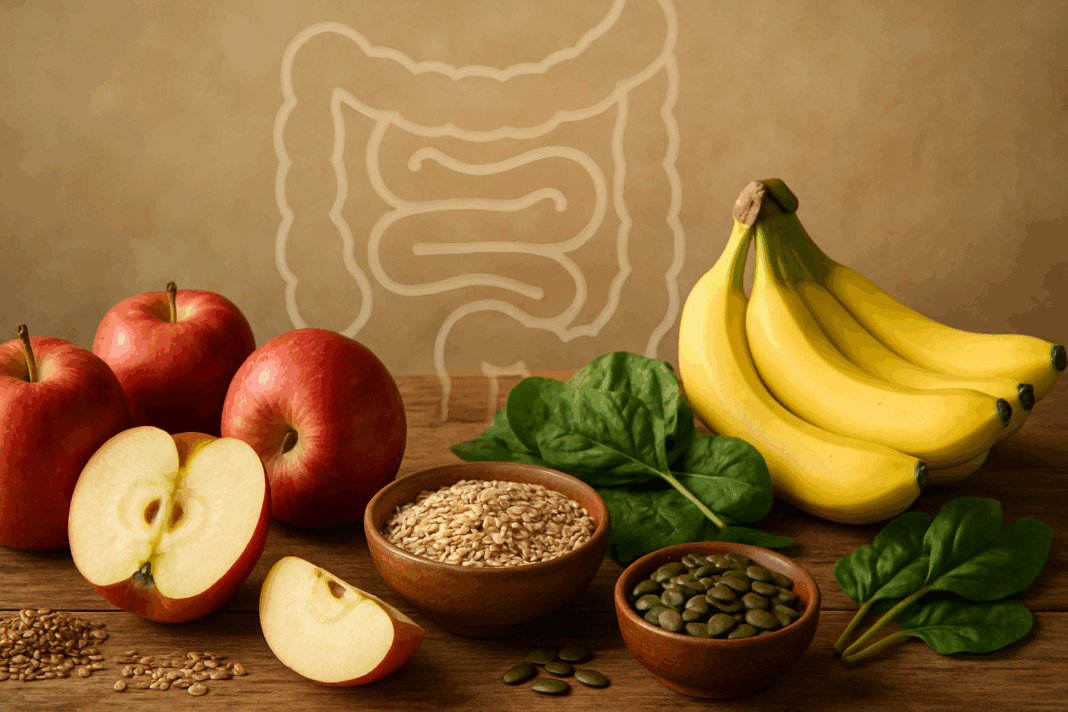The connection between what we eat and how well our gut functions has taken center stage in conversations about modern health. Fruits like apples and bananas, often praised for their nutritional value, hold a unique place in this discussion due to their high fiber content. A closer look at the fiber food chart reveals just how essential these everyday fruits are in supporting a healthier gut microbiome and long-term digestive wellness. Understanding their fiber makeup not only enhances our dietary decisions but also deepens our grasp of the interplay between food and holistic gut health.
You may also like: The Ultimate Guide to Gut Healthy Meals: Best Meals for Gut Health and Nourishing Recipes You’ll Love
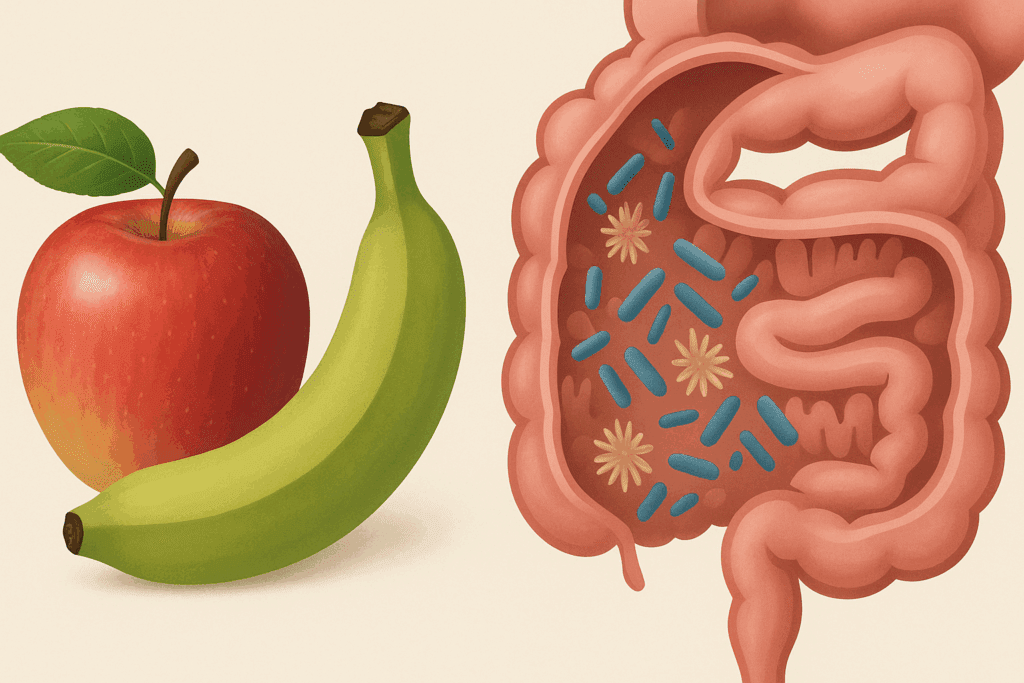
Unlocking the Gut Health Potential of Apples and Bananas
Apples and bananas are not just convenient snacks; they are potent allies in our quest for digestive harmony. Behind their sweetness and texture lies a dense matrix of dietary fiber—both soluble and insoluble—which plays a critical role in regulating digestion, supporting beneficial gut bacteria, and reducing gastrointestinal inflammation. Soluble fiber in apples, particularly pectin, forms a gel-like substance in the gut that slows digestion and stabilizes blood sugar levels. In contrast, the insoluble fiber helps bulk up stool, promoting regularity and preventing constipation.
While bananas may often be overlooked as a fiber source, they provide significant digestive support, especially when considering the differences between green (less ripe) and yellow (ripe) bananas. Green bananas are rich in resistant starch, a unique type of carbohydrate that acts like soluble fiber and ferments in the colon, feeding gut-friendly bacteria and producing short-chain fatty acids that nourish the colon lining. By asking questions like, “do bananas have fiber?” and “how much fiber in a banana?”, consumers gain insight into the transformative health potential embedded in such humble fruits.
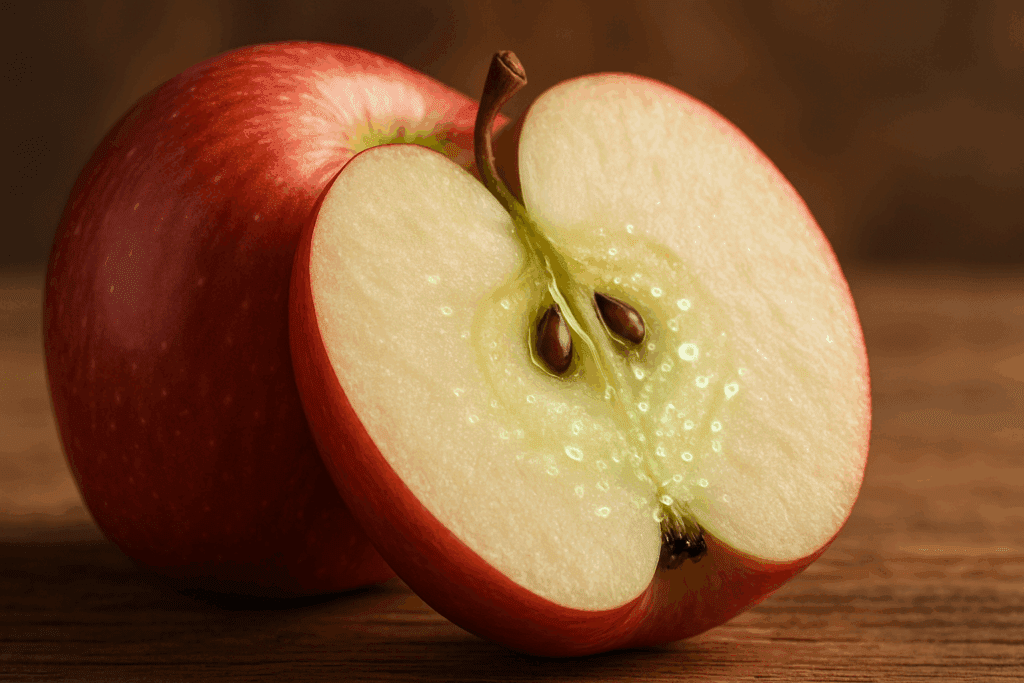
How Apples Support Gut Health Through Fiber
Exploring how much fiber in an apple can guide your understanding of why this fruit holds a prominent place in nearly every fiber food chart. A medium-sized apple typically contains around 4 grams of dietary fiber, with a near-even balance between soluble and insoluble types. This makes apples particularly effective at improving bowel consistency while simultaneously soothing irritated intestinal walls. The pectin in apples is especially noteworthy, as it supports the growth of beneficial bacteria such as Bifidobacteria, a genus closely associated with optimal gut health.
Numerous studies suggest that regularly consuming apples may enhance the diversity of your gut microbiota, helping fend off digestive disorders such as irritable bowel syndrome (IBS) and even contributing to better immune modulation. Furthermore, examining apple fiber content reveals that most of the fiber resides in the skin, emphasizing the importance of consuming apples whole when possible. Understanding the nuances of fiber in an apple helps health-conscious individuals make informed choices about incorporating fruit into a balanced gut health regimen.
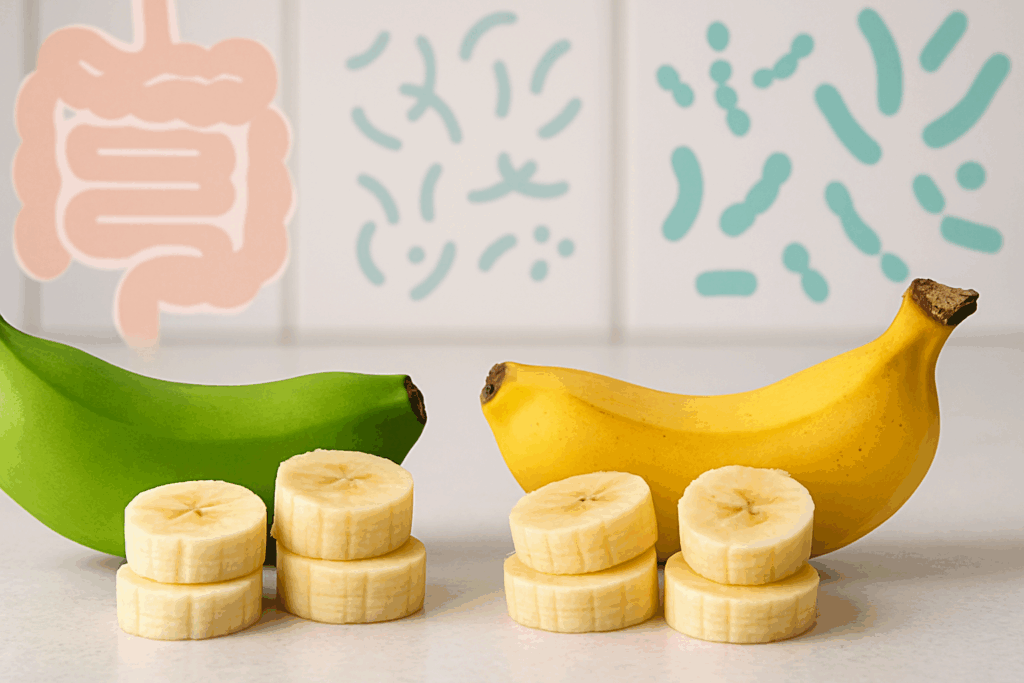
Banana Fiber Facts: A Versatile Tool for Digestive Wellness
While the apple often dominates discussions about fiber, the banana brings a unique contribution to the table. If you’ve ever wondered, “how much fiber does a banana have?”, you may be surprised to learn that a medium banana contains approximately 3 grams of fiber. Though slightly lower than the average apple, the banana’s fiber composition is distinguished by its resistant starch content, especially in unripe specimens. This form of fiber resists digestion in the small intestine, reaching the colon intact and feeding beneficial microbes along the way.
When exploring the dietary fibre in banana, it’s crucial to note that ripeness affects the nature of fiber present. Green bananas act more like a prebiotic, while fully ripened bananas offer softer soluble fiber that gently regulates bowel movements. In terms of a high fiber foods chart, bananas deserve recognition not just for their gram count, but for the functional diversity of their fiber. Integrating bananas into your diet can improve not just digestion but also nutrient absorption and gut flora composition.
The Fiber Food Chart: A Practical Tool for Better Gut Choices
A well-organized fiber food chart can be an indispensable resource for individuals striving to support their digestive systems holistically. By visually representing the fiber content of various foods—including fruits, vegetables, legumes, and grains—such charts allow for strategic meal planning and balanced dietary intake. Including apples and bananas in a fiber in foods table offers clarity on where these fruits rank compared to other common fiber sources.
The fiber food chart not only illuminates the fiber values of apples and bananas but also provides comparative insights that empower better decisions. For example, while broccoli ranks high on many charts, providing around 2.4 grams per 100 grams, apples and bananas outperform it in terms of total fiber per serving. This comparison also helps answer questions like, “how much fiber does broccoli have?” and “does broccoli contain fiber?”. With a comprehensive fiber diet chart, individuals can tailor their intake to meet daily recommended levels—25 grams for women and 38 grams for men—thereby promoting sustained digestive wellness.

Exploring the Apple Fiber Content in Context
When diving into questions like “are apples high in fiber?” or “how much fiber in one apple?”, it’s helpful to examine the broader nutritional context. Apples provide not just fiber, but also a combination of polyphenols, vitamin C, and potassium, all of which synergize to create a more comprehensive wellness effect. The fiber in 1 apple contributes to satiety, reduces cholesterol levels, and supports gradual glucose absorption, making it a valuable fruit for those managing metabolic conditions like type 2 diabetes.
Looking at a fiber in fruit chart, apples often rank near the top due to their well-rounded profile. Moreover, fiber in one apple contributes to a feeling of fullness without the calorie burden associated with other snack options. Including apples in your daily diet is not only an investment in digestive efficiency but also a cornerstone of overall nutritional strategy. The data on how much dietary fiber in an apple exists is not only clinically supported but functionally significant.
Rethinking Banana Fiber: Beyond the Basics
Bananas often receive less attention in dietary planning compared to flashier superfoods, but they deserve a second look. The question of “how much fiber is in one banana?” reveals a surprisingly robust contribution to daily fiber intake. The resistant starch in bananas helps produce beneficial compounds like butyrate, a short-chain fatty acid linked to reduced inflammation and improved colon health. This elevates bananas from a mere snack to a valuable component in gut-targeted dietary strategies.
By comparing the fiber in bananas to that in apples, we gain a clearer picture of their complementary roles. While apples may offer slightly more total fiber, bananas provide functional benefits that extend beyond basic fiber metrics. These include promoting regular bowel movements, enhancing microbial diversity, and providing sustained energy release. Whether you’re reviewing a high fiber foods chart or consulting a dietitian, bananas should not be underestimated in a fiber-rich diet.

Incorporating Fiber from Multiple Sources Using the Fiber Food Chart
Strategically using the fiber food chart allows individuals to mix and match fiber sources from different food groups. For instance, a meal combining apples, bananas, beans, and leafy greens offers a wide spectrum of fiber types, each serving a unique physiological function. Legumes provide high levels of insoluble fiber, while fruits contribute both soluble and prebiotic components, and cruciferous vegetables like broccoli deliver sulfur-rich compounds with antioxidant properties.
The fiber in foods table becomes more than just a nutritional reference—it transforms into a planning tool for wellness. Whether you’re assessing how much fiber in 1 apple or determining the amount of fiber in broccoli, the fiber chart provides clarity and direction. This method of dietary mapping ensures balanced fiber intake across meals, supporting not just digestive wellness but also systemic health, including heart function, blood sugar regulation, and mental clarity.
Fiber Variety: From Bean Fiber Charts to Vegetable Fiber Charts
A robust fiber intake plan goes beyond fruits and should include vegetables and legumes. A bean fiber chart will quickly reveal that options like lentils, black beans, and chickpeas offer between 6–9 grams of fiber per serving, making them indispensable for reaching recommended intake levels. When paired with apples and bananas, these foods create synergistic effects that amplify gut health benefits.
Likewise, a vegetable fiber chart highlights powerhouses such as Brussels sprouts, carrots, and spinach. Though not as sweet or snackable as apples and bananas, these vegetables contribute to an overall fiber profile that enhances gut motility and feeds different microbial populations in the gut. By understanding where various foods sit within the fiber diet chart, individuals can curate daily menus that are both diverse and functionally balanced.
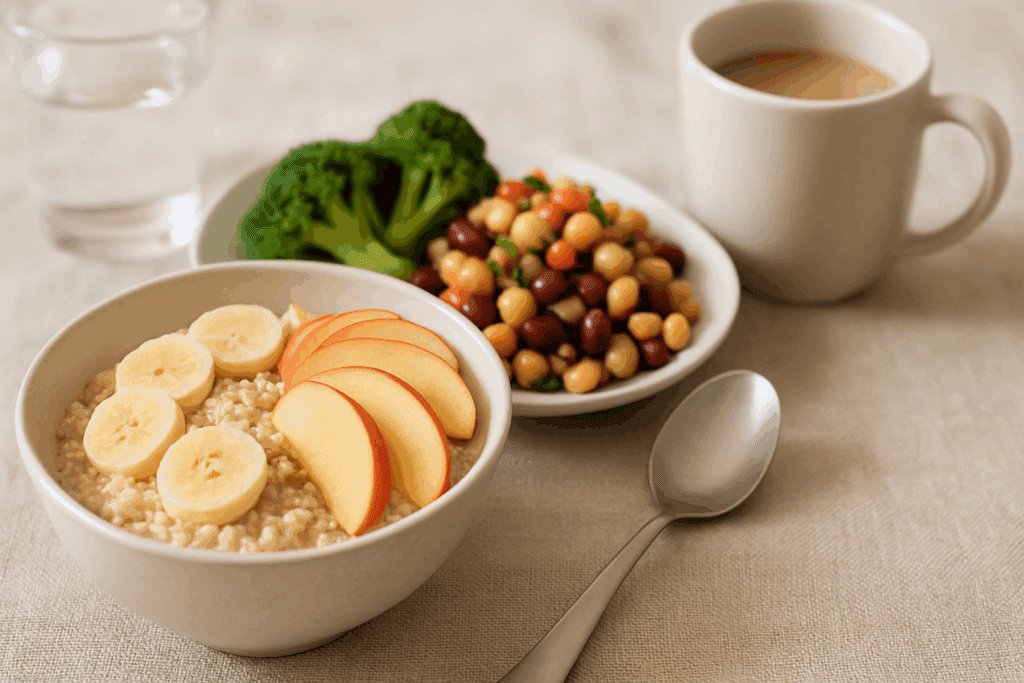
The Interplay Between Soluble and Insoluble Fiber
A deep dive into fiber type reveals why it’s not just about quantity but also quality. Soluble fiber, which is abundant in both apples and bananas, dissolves in water and helps form a gel-like substance in the gut. This slows down digestion, stabilizes blood sugar levels, and lowers LDL cholesterol. On the other hand, insoluble fiber adds bulk to the stool and helps food pass more quickly through the stomach and intestines.
Understanding how much fiber in an apple or how much fiber does a banana have becomes more meaningful when you consider the types of fiber involved. This knowledge allows for intentional eating that supports specific health goals—whether that’s reducing constipation, lowering cholesterol, or enhancing microbial health. While dietary fiber foods charts list total fiber, deeper nutritional awareness enables more targeted and personalized food choices.
Real-World Applications: Crafting a Gut-Healthy Diet
Integrating this wealth of knowledge into everyday life requires practical application. For example, starting your day with oatmeal topped with sliced apples and bananas delivers a triple shot of soluble fiber, resistant starch, and prebiotics. Adding a side of steamed broccoli at lunch and a bean salad at dinner rounds out the intake with diverse fiber sources. With thoughtful planning guided by a fiber food chart, this approach not only meets fiber goals but enhances overall digestive resilience.
Professionals working in healthcare, nutrition counseling, or wellness coaching can also use the fiber in fruit chart and associated data to educate patients and clients. Personalized nutrition plans that highlight how much fibre in one apple or the fiber in 1 banana build client confidence and compliance. These charts transform abstract nutritional guidelines into concrete, actionable choices, empowering individuals to take charge of their health through food.
Frequently Asked Questions: Apples, Bananas, and the Fiber Food Chart
How can the fiber food chart help tailor meals for specific gut issues like IBS or bloating?
The fiber food chart isn’t just a generalized guide—it can be strategically used to address specific digestive conditions such as irritable bowel syndrome (IBS), chronic bloating, or irregular bowel movements. Individuals with IBS may benefit from understanding how different types of fiber—especially soluble vs. insoluble—interact with their symptoms. For example, soluble fiber found in apples can help slow digestion and ease diarrhea, while insoluble fiber in vegetables like broccoli might trigger bloating in sensitive individuals. The chart allows users to customize their intake by selecting foods with the fiber type most suited to their symptoms, which can be far more effective than random elimination diets. Integrating the fiber food chart into nutritional planning empowers users to avoid flare-ups while maintaining fiber intake that supports overall gut health.
Do apples have fiber that changes based on cooking methods or storage?
Yes, the fiber in apples can vary significantly depending on preparation and storage. Raw apples maintain their natural fiber structure—especially the skin, which holds the majority of insoluble fiber. Cooking apples, especially when peeled or overcooked, can break down both soluble and insoluble fibers, reducing their effectiveness in promoting gut motility. Refrigeration doesn’t reduce fiber content, but prolonged storage can degrade certain phytochemicals that work synergistically with fiber. Additionally, juicing removes nearly all fiber, making whole apples a far superior choice for those prioritizing digestive wellness. Understanding how much fiber in an apple remains after preparation helps individuals better manage their fiber intake without sacrificing the benefits.
Can the fiber in bananas support exercise recovery and sports performance?
Absolutely. While bananas are often celebrated for their potassium content, the dietary fibre in banana—particularly its resistant starch—offers less commonly discussed benefits related to exercise recovery. Resistant starch supports the gut microbiome, which in turn influences systemic inflammation and immune function—two areas critical for post-workout recovery. A healthy microbiome also supports efficient nutrient absorption, which helps replenish energy stores after strenuous activity. When athletes ask, “do bananas have fiber that matters for training?” the answer is yes: their unique carbohydrate-fiber profile makes them ideal pre- or post-workout fuel. Understanding how much fiber in a banana contributes to these outcomes adds depth to performance nutrition planning.
How do seasonal and regional differences affect the fiber content in apples and bananas?
Seasonal and regional variances can lead to minor but meaningful changes in fiber content. Soil quality, climate conditions, and harvesting practices influence how much fiber in 1 apple or banana you actually consume. For example, apples grown in cooler climates often have thicker skins, increasing their insoluble fiber content. Similarly, bananas harvested earlier for export may have more resistant starch, while those ripened on the tree may contain slightly more soluble fiber due to natural sugar conversion. Tracking these subtleties through a fiber in fruit chart can help consumers make informed choices based on geography and seasonality, aligning gut-friendly choices with what’s available locally.
What overlooked foods should be added to the fiber in foods table for better gut health?
While apples, bananas, and broccoli are frequent chart-toppers, several high-performing foods are often overlooked in the fiber in foods table. Chia seeds, for instance, contain around 10 grams of fiber per ounce and form a gel when soaked, mimicking soluble fiber behavior. Jerusalem artichokes are high in inulin, a prebiotic fiber that stimulates the growth of beneficial bacteria more effectively than some traditional fruits. Seaweed, particularly nori and kelp, also provides soluble fiber and has additional benefits for the gut lining. Including these lesser-known items in a comprehensive fiber diet chart expands the variety of beneficial fibers in one’s diet and helps meet daily targets in more creative ways.
What does the latest research say about fiber from fruits vs. vegetables?
Recent studies have examined whether the source of fiber—fruits versus vegetables—matters for long-term gut health. Results suggest that while both categories are beneficial, fruit-derived fiber may have a stronger influence on microbial diversity due to its mix of polyphenols and soluble fibers. For example, fiber in an apple supports both mechanical digestion and microbial fermentation, offering dual functionality. On the other hand, the amount of fiber in broccoli predominantly aids transit and bulking of stool but contributes fewer fermentable substrates. A vegetable fiber chart is helpful, but should ideally be paired with fruit-focused data to create a more holistic understanding of how different sources affect the gut ecosystem.
Using the Fiber Food Chart to Balance Soluble and Insoluble Fiber
Many consumers know they need fiber but are unaware that balance between fiber types matters. The fiber food chart can be a guiding tool for this purpose. It allows users to see at a glance whether their meals lean more heavily on soluble or insoluble fibers. For example, apples and oats provide a strong soluble fiber base, while vegetables like broccoli and carrots supply mostly insoluble fiber. Using this visual breakdown, people can structure meals that minimize bloating and support both microbial diversity and digestive regularity. This strategy is particularly useful for those transitioning to higher-fiber diets who may otherwise experience discomfort due to imbalanced intake.
How do food processing techniques influence how much fiber in one apple or banana is retained?
Food processing can drastically alter fiber content and functionality. Drying, for example, concentrates sugar while reducing water but typically preserves fiber; thus, dried apples still retain a good portion of their original fiber. Canning or freezing apples and bananas may slightly reduce fiber solubility due to thermal breakdown, while puréeing or blending tends to disrupt cell walls, diminishing fiber’s structural benefits. Even in smoothies, the question of how much fiber does an apple have is complicated, as the texture may mimic fiber presence while the physiological effect is reduced. This has important implications for those relying on processed foods in meal prep, especially when consulting a fiber food chart for accurate data.
Do children and older adults benefit differently from fiber in one apple or banana?
Yes, age significantly influences how fiber affects the body. In children, fiber plays a key role in establishing a stable gut microbiome early in life. Apples and bananas—being sweet, palatable, and easy to digest—are ideal early introductions to dietary fiber. Conversely, in older adults, decreased gastric motility and slowed digestion make these fruits especially useful for promoting bowel regularity and preventing constipation. The fiber in 1 apple and the dietary fibre in banana provide gentle support without causing discomfort, making them a staple for both ends of the age spectrum. Tailoring fiber recommendations by life stage enhances both compliance and efficacy.
Can tracking fiber in fruit charts improve diet diversity and reduce gut dysbiosis?
Yes, using a fiber in fruit chart as part of a broader dietary strategy can significantly improve gut health outcomes, particularly in individuals with dysbiosis or limited microbial diversity. By rotating different high-fiber fruits such as apples, bananas, berries, and pears, individuals expose their microbiota to a range of fermentable substrates. This supports the growth of multiple beneficial bacterial strains, rather than overfeeding a narrow few. When people rely on the same foods daily, even if they ask, “how much dietary fiber in an apple is ideal?” they may miss out on fiber variety. The chart becomes more than a reference—it becomes a tool for meal planning that supports microbial diversity, resilience, and digestive integrity.
Bonus Insight: Why You Should Cross-Reference the Bean Fiber Chart and Vegetable Fiber Chart
Fruits often lead the conversation, but integrating legumes and vegetables into your fiber strategy is essential for full-spectrum gut support. A bean fiber chart reveals that just half a cup of lentils can deliver more than 7 grams of fiber, while the vegetable fiber chart highlights options like artichokes and sweet potatoes that are gut-friendly and versatile. Cross-referencing these with data from a fiber food chart helps create synergistic meal plans where the fiber types complement each other. Doing so ensures you meet both the quantity and quality of fiber intake needed for optimal health. It’s not about choosing apples over broccoli or bananas over beans—it’s about knowing how to combine them thoughtfully.
Conclusion: The Transformative Power of Understanding the Fiber Food Chart
The journey to better gut health often begins with simple questions: do apples have fiber? How much fiber does a banana have? These inquiries, though basic on the surface, open the door to profound insights about the relationship between diet and well-being. As we’ve explored, apples and bananas are not just accessible fruits but essential contributors to a comprehensive, fiber-rich diet.
Using the fiber food chart as a guide, individuals can make informed, strategic choices that support a thriving gut microbiome and improved long-term health. Whether evaluating fiber in an apple or comparing the fiber in one apple to the dietary fibre in banana, this awareness cultivates a deeper connection with food and its role in preventive health. By embracing these insights and applying them through everyday meals, we unlock a path to vitality that is grounded in science, supported by nature, and achievable for all.
In the context of holistic supplements and gut health strategies, fiber remains a cornerstone nutrient—often underestimated, yet fundamentally transformative. Let the data-driven clarity of the fiber chart empower your choices, affirming that health begins not just with what you eat, but with what your body can digest, absorb, and utilize for enduring wellness.
Further Reading:
Your Ultimate High-Fiber Grocery List
How the fiber in apples can benefit your gut health and waistline

